Abstract
1. We investigated the effects of the opiate antagonist naloxone on changes in renal nerve activity and the renal sympathetic baroreflex during haemorrhage and whether they could be mimicked by blocking afferent input from cardiac receptors. 2. Renal nerve activity, arterial pressure and heart rate were recorded in conscious rabbits during blood loss of either 18 or 34-40% of the blood volume. The renal sympathetic baroreflex was elicited by perivascular balloon-induced changes in arterial pressure, before and at the end of haemorrhage. The experiment was repeated during intravenous naloxone infusion (4 mg kg-1, then 0.12 mg kg-1 min-1), and after blocking afferent input from cardiac receptors (5% intra-pericardial procaine). 3. Moderate haemorrhage elicited a rise in renal nerve activity and modest inhibition of the range of the renal sympathetic baroreflex. Severe haemorrhage triggered an abrupt fall in nerve activity and arterial pressure which was accompanied by strong inhibition of the baroreflex range and other curve parameters. There were minimal changes in the baroreceptor-heart rate reflex. 4. Intravenous naloxone and pericardial procaine prevented the falls in renal nerve activity and pressure triggered by severe blood loss but did not affect the increase in activity elicited by moderate haemorrhage. Both drugs produced similar enhancement of the normovolaemic renal sympathetic baroreflex. Naloxone prevented the baroreflex inhibition elicited by both levels of haemorrhage while pericardial procaine prevented most (but not all) of the baroreflex inhibition seen during severe haemorrhage without affecting that found during moderate haemorrhage. 5. We conclude that cardiac receptors (probably ventricular baroreceptors) but not arterial baroreceptors have an opiate synapse on their reflex pathways to the renal nerve. A major part of the action of naloxone during haemorrhage can be explained by blockade of this type of synapse on baroreflex pathways to renal and probably other sympathetic vasoconstrictors. The presence of procaine-resistant but naloxone-sensitive effects during haemorrhage suggests a role for extra-cardiac baroreceptors with opioid central nervous connections.
Full text
PDF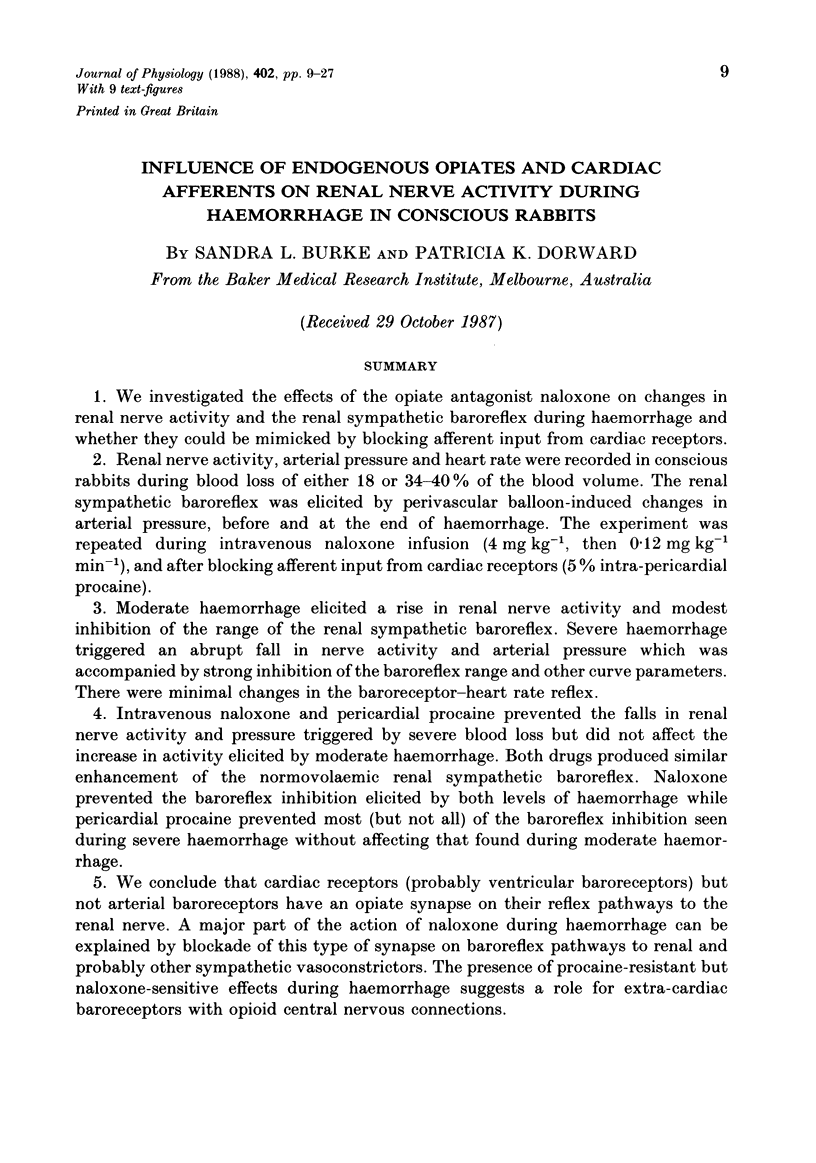
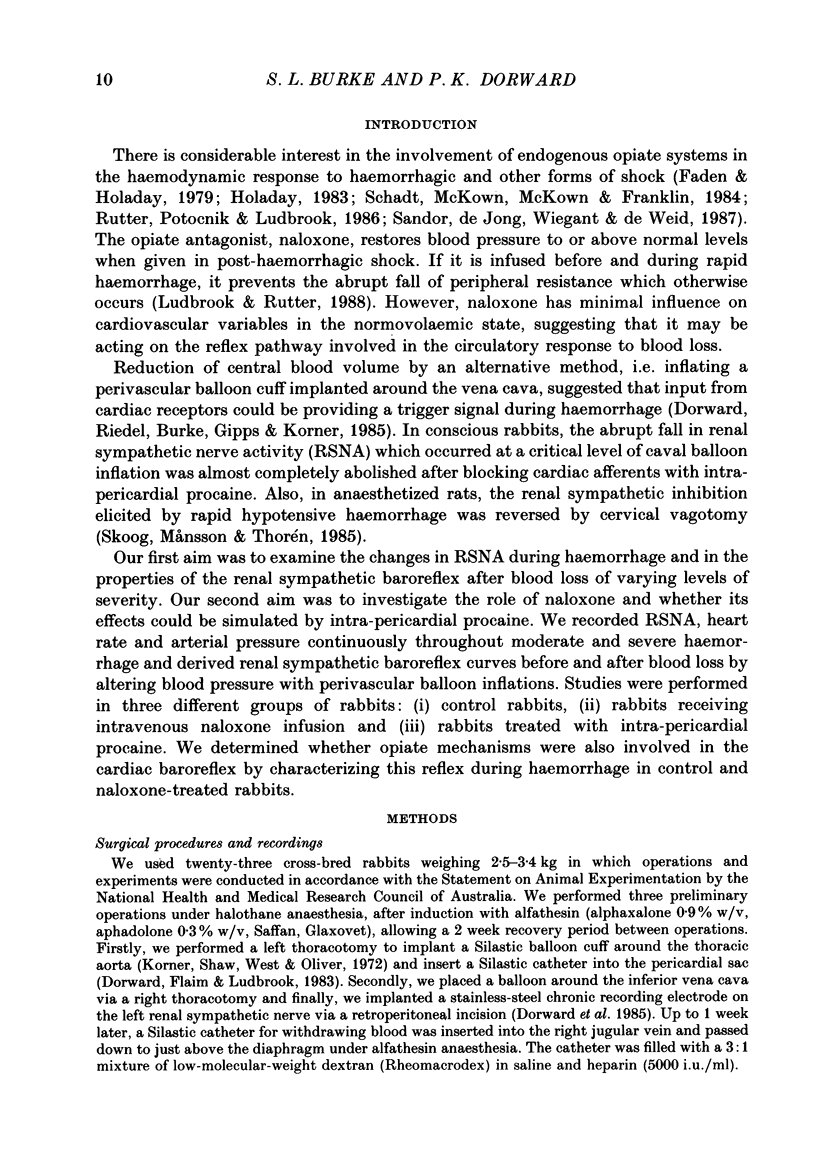
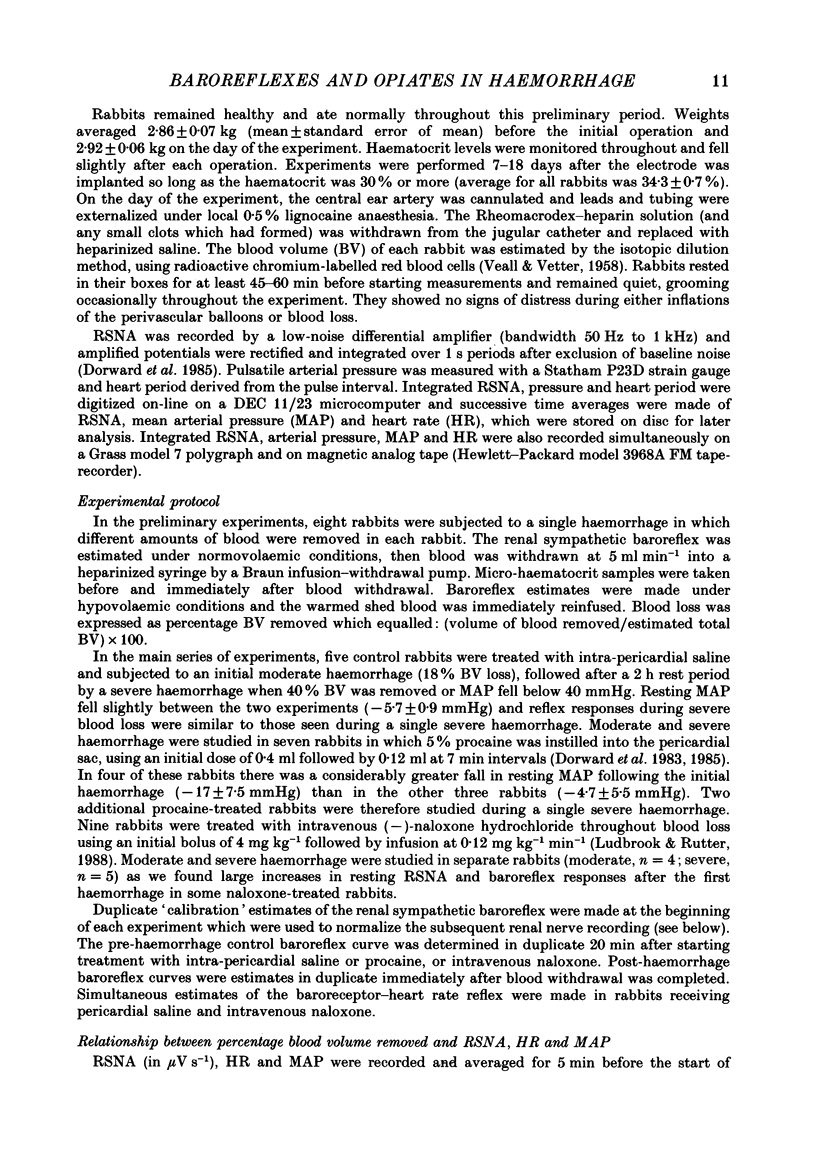
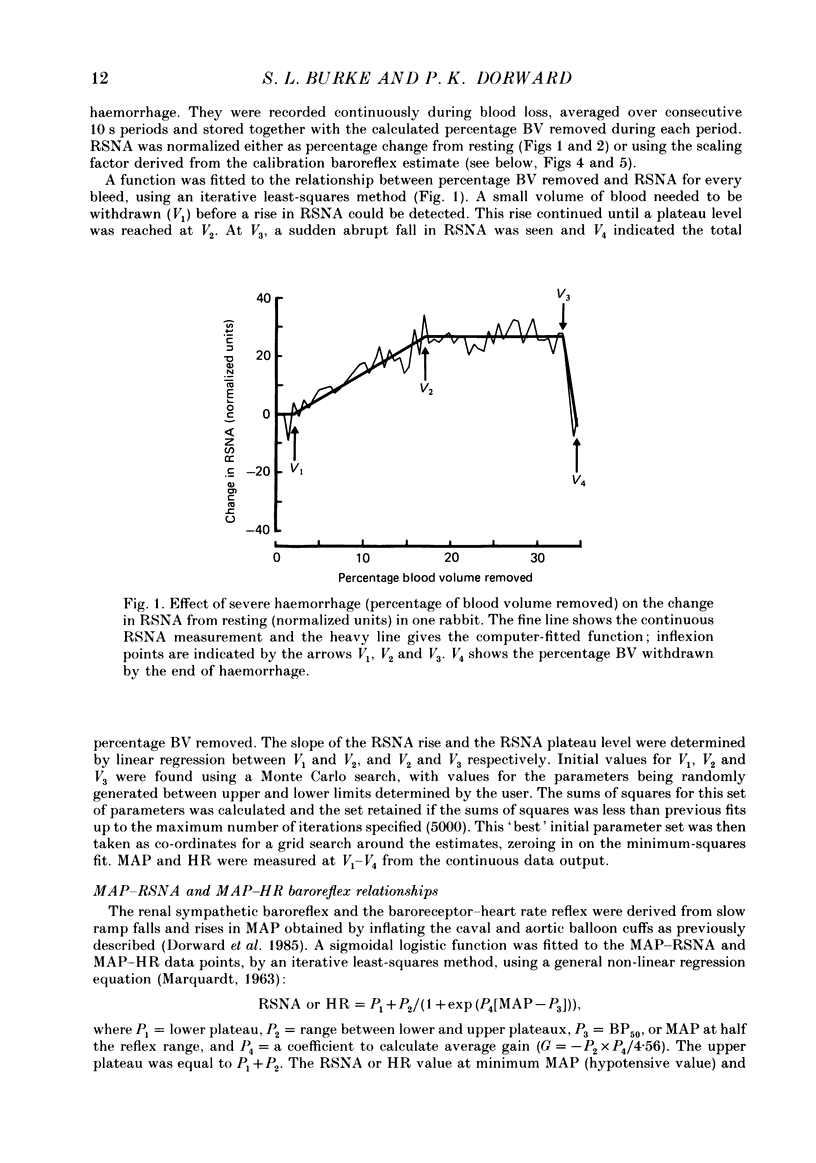
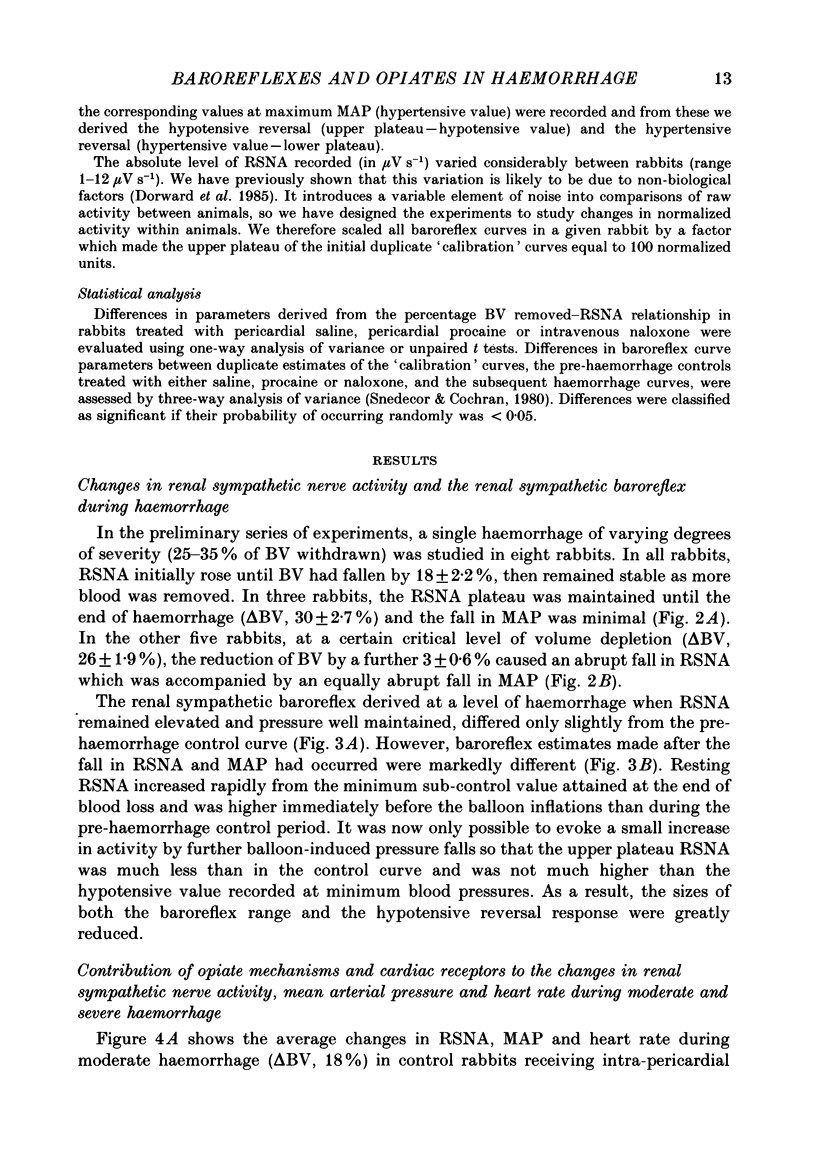
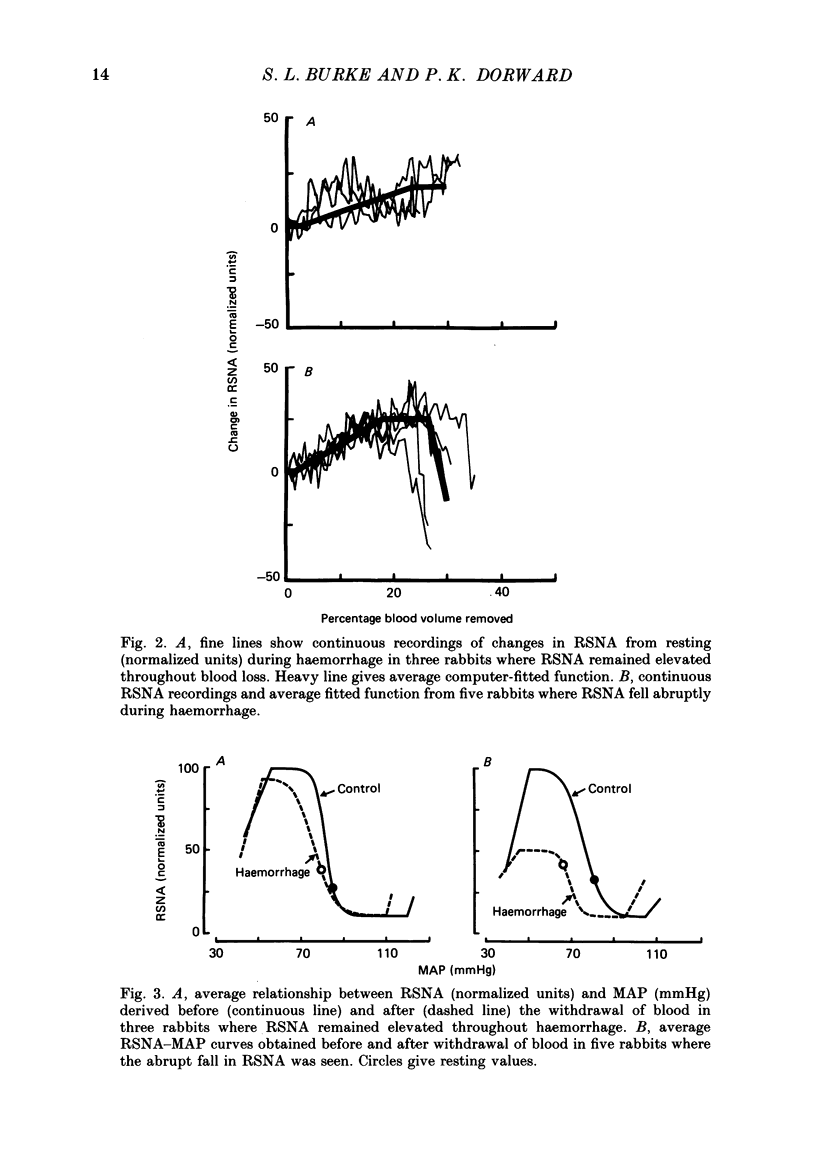
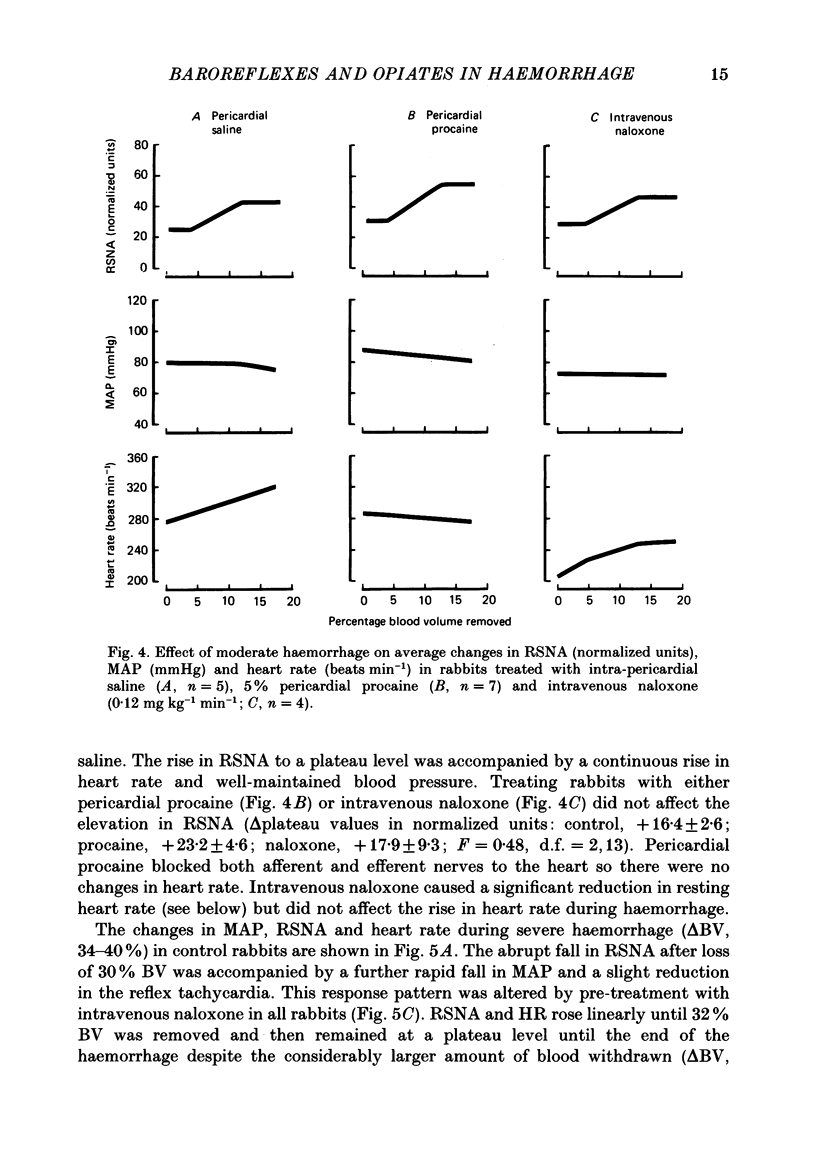
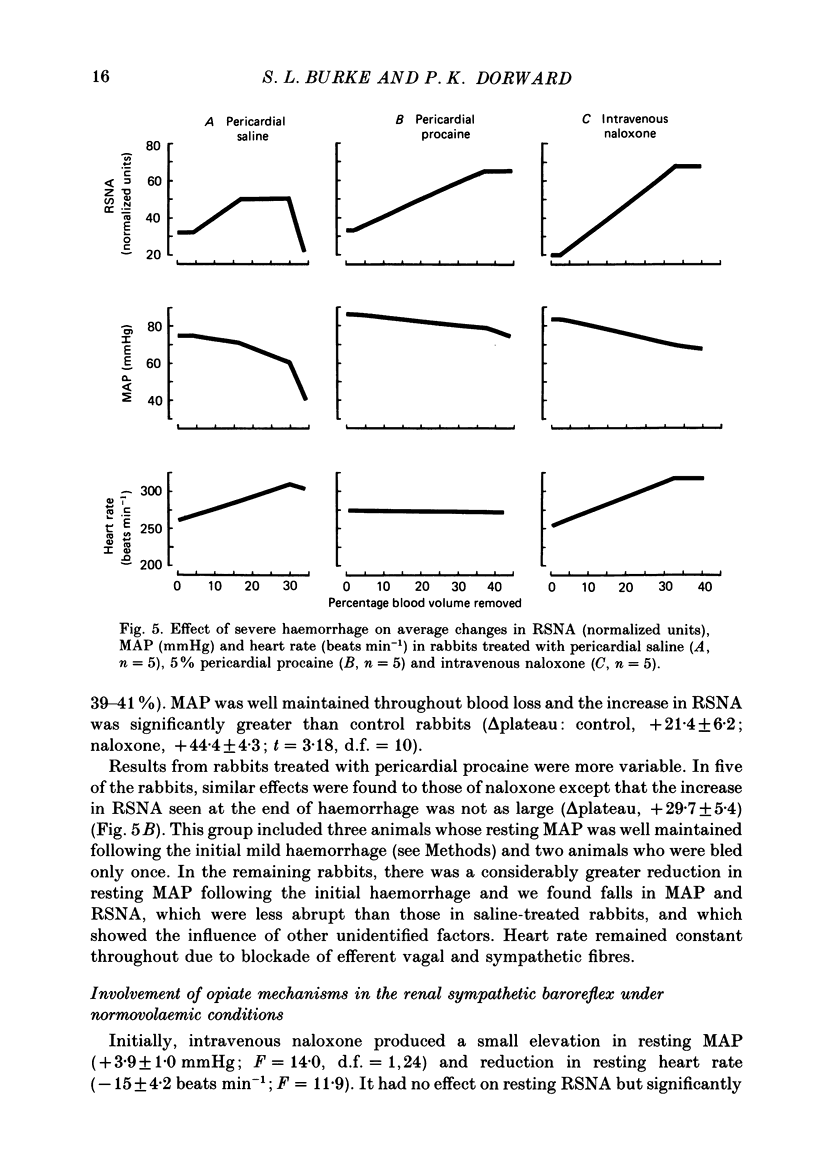
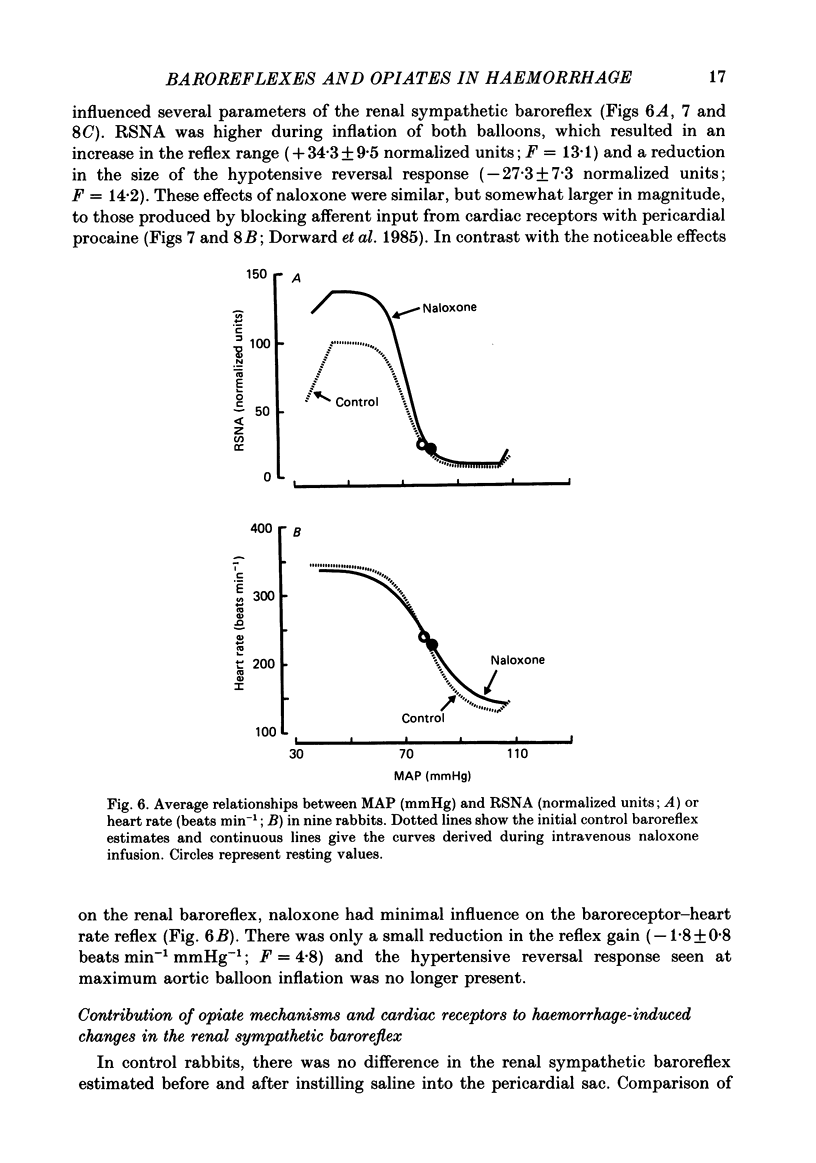
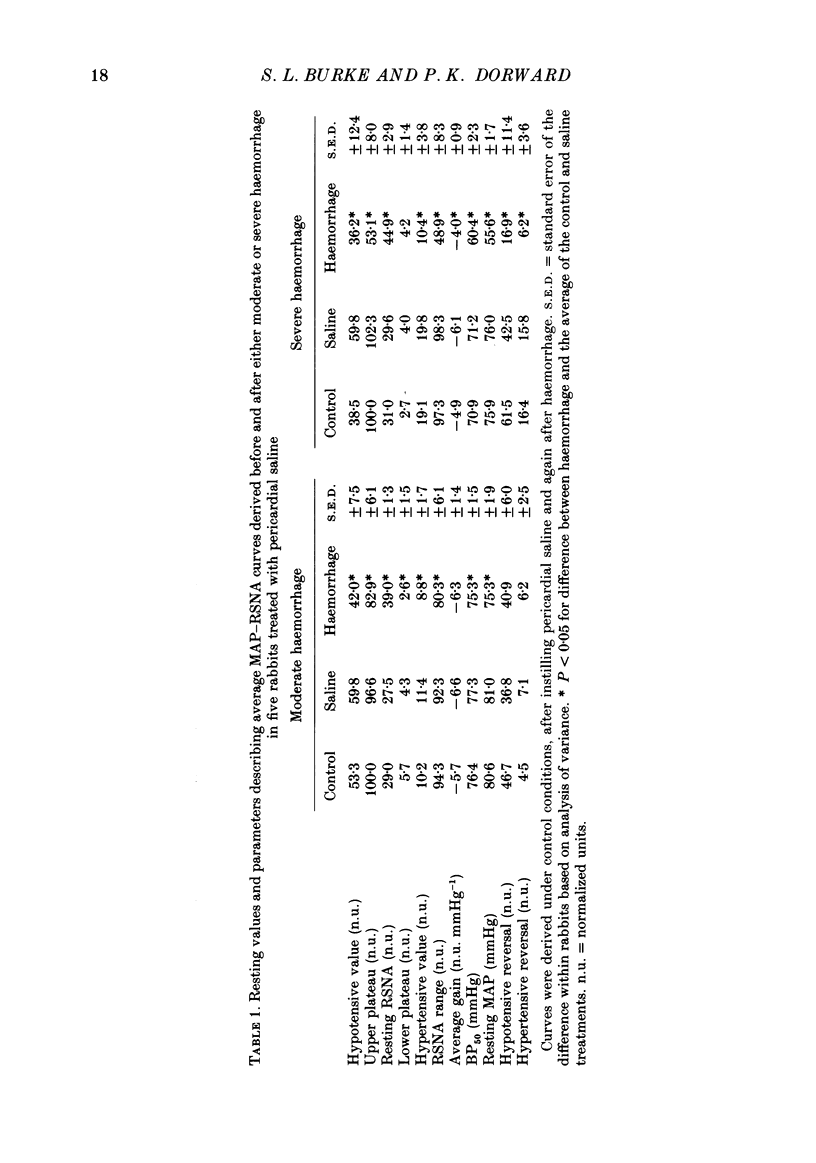
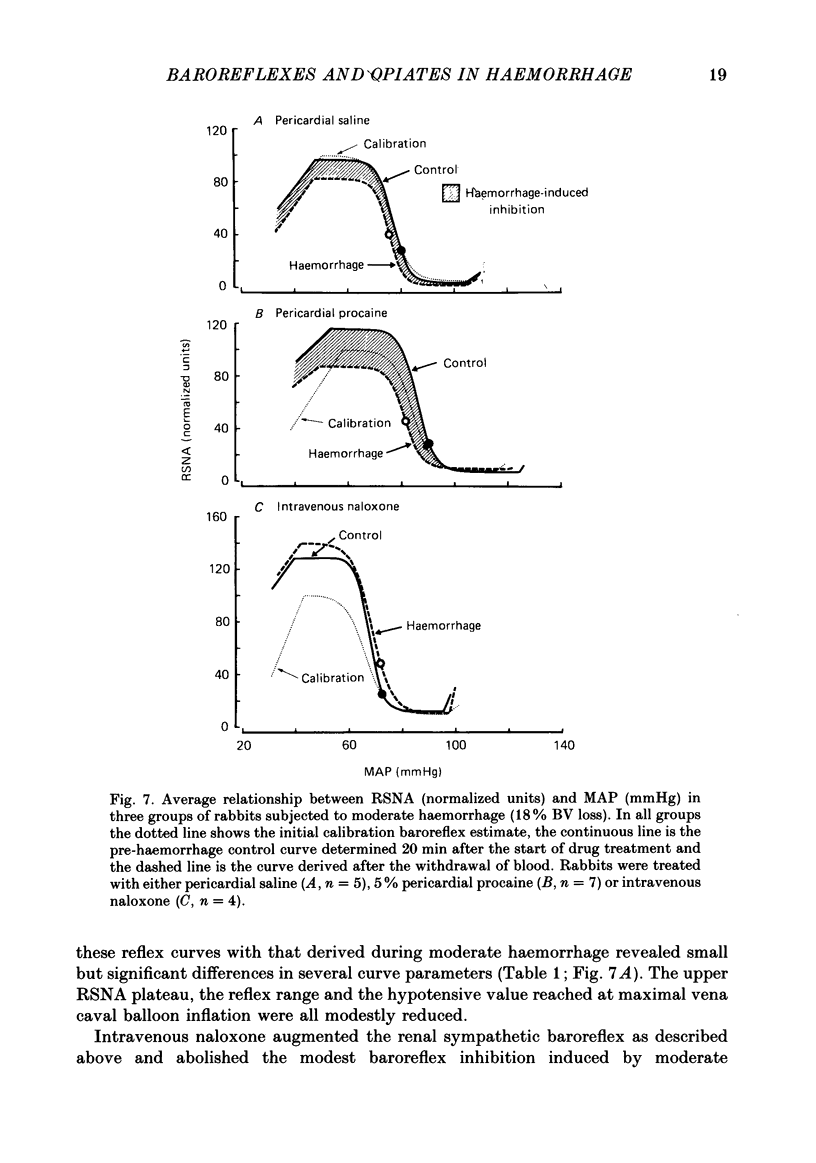
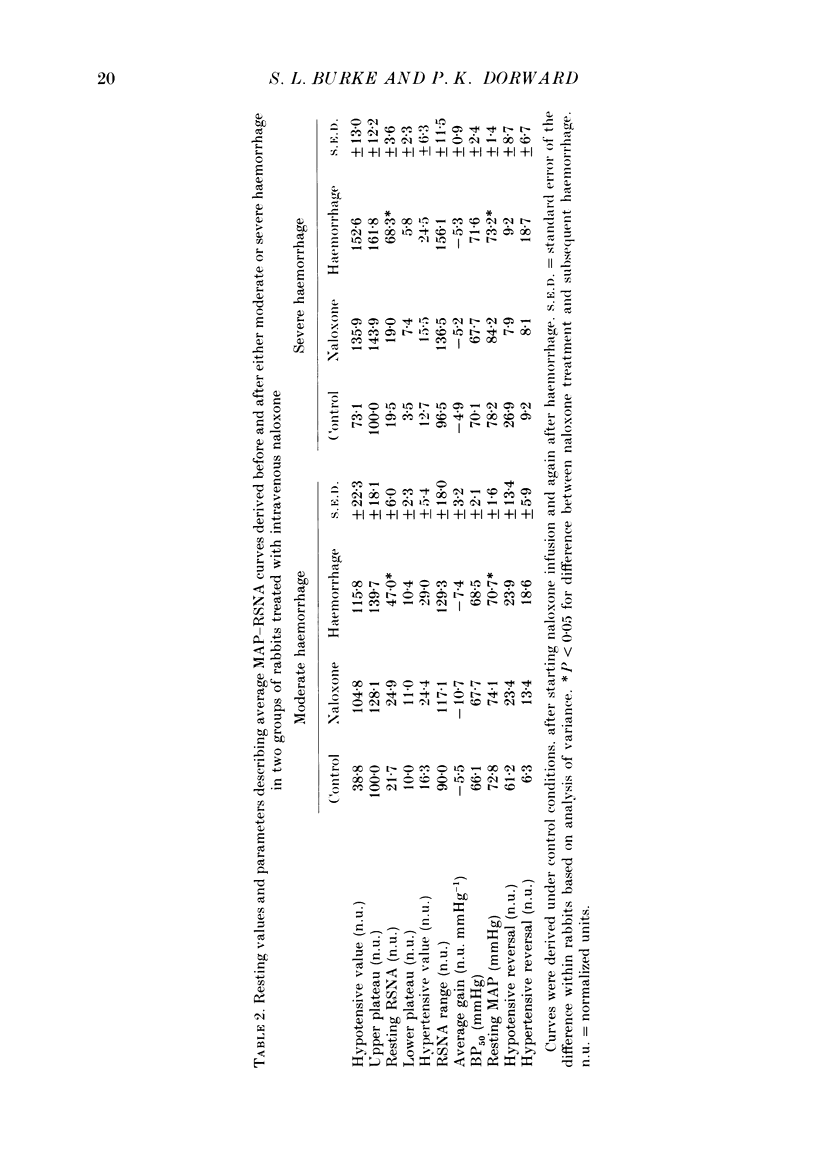
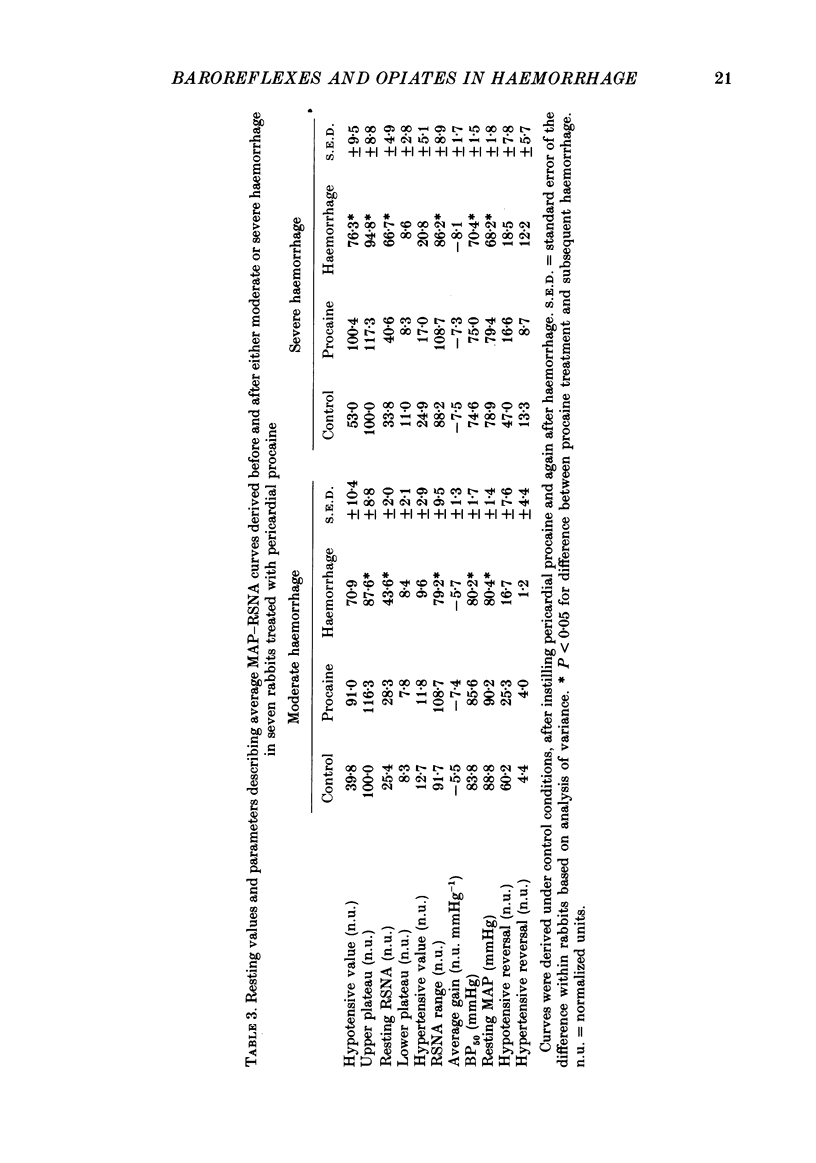

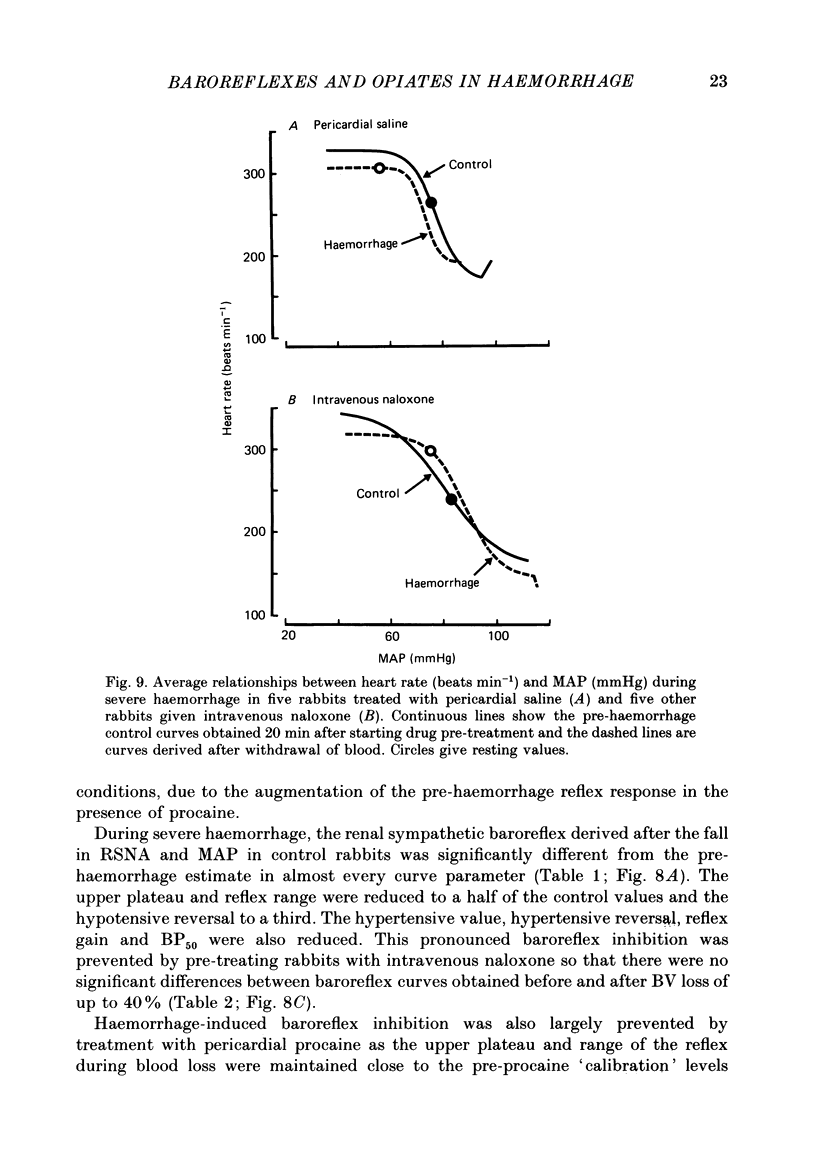
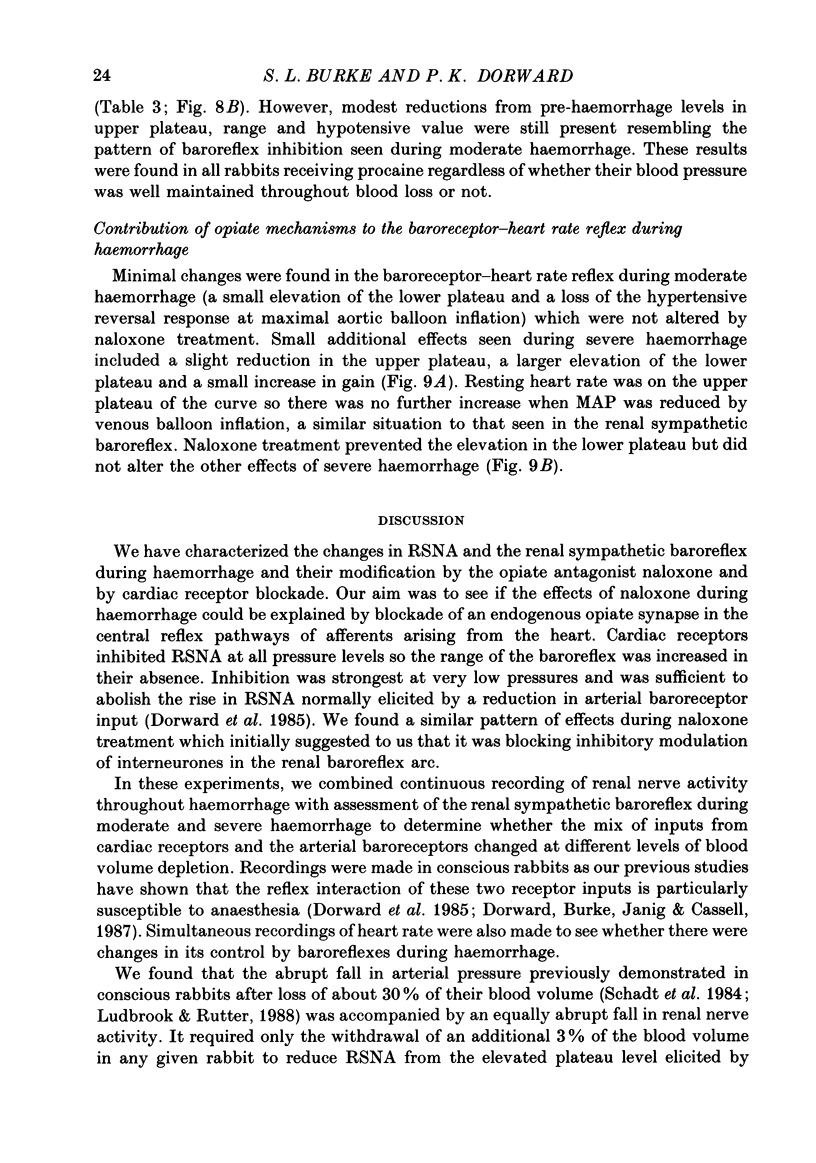
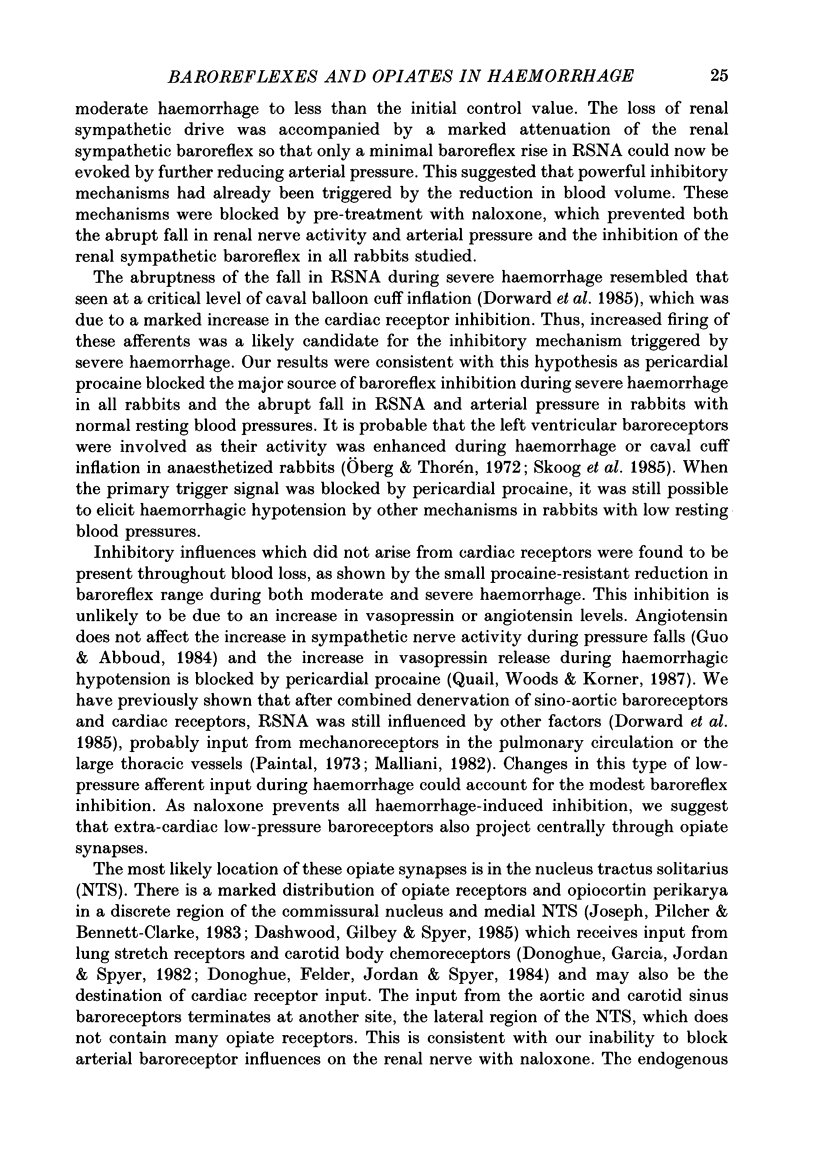
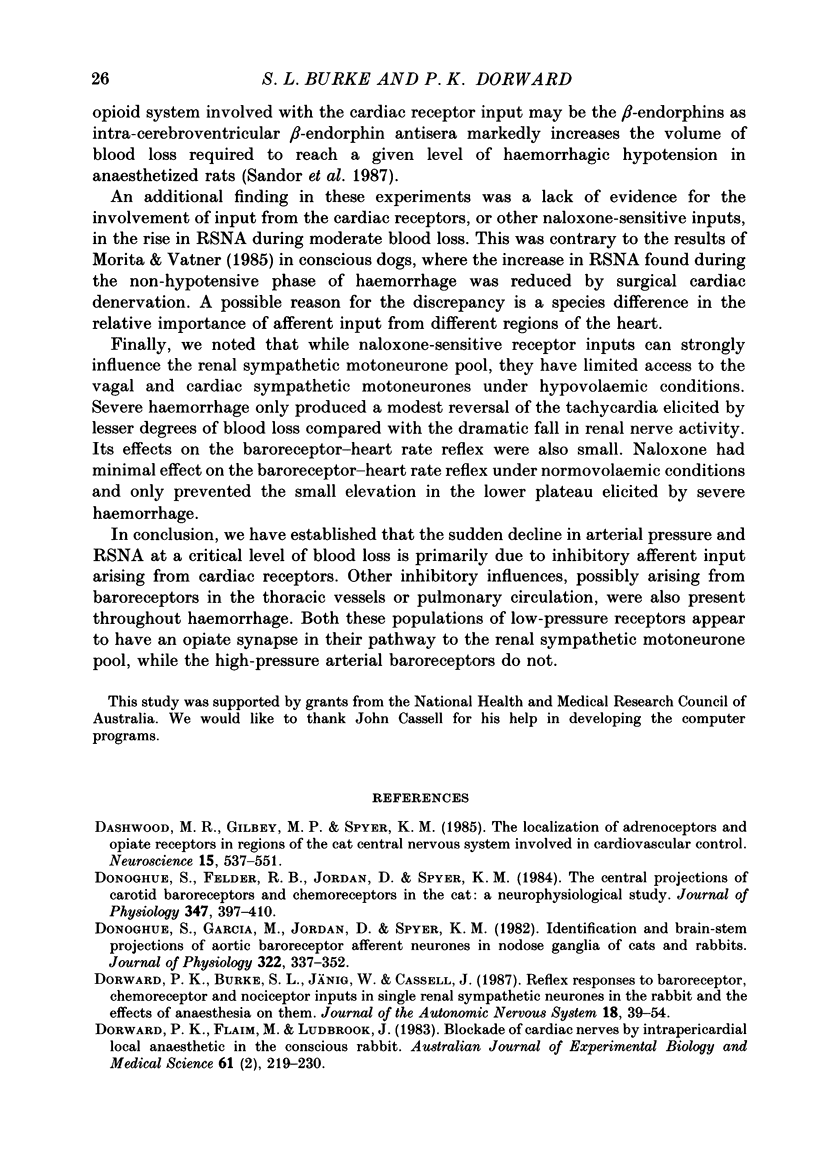

Selected References
These references are in PubMed. This may not be the complete list of references from this article.
- Dashwood M. R., Gilbey M. P., Spyer K. M. The localization of adrenoceptors and opiate receptors in regions of the cat central nervous system involved in cardiovascular control. Neuroscience. 1985 Jun;15(2):537–551. doi: 10.1016/0306-4522(85)90232-5. [DOI] [PubMed] [Google Scholar]
- Donoghue S., Felder R. B., Jordan D., Spyer K. M. The central projections of carotid baroreceptors and chemoreceptors in the cat: a neurophysiological study. J Physiol. 1984 Feb;347:397–409. doi: 10.1113/jphysiol.1984.sp015072. [DOI] [PMC free article] [PubMed] [Google Scholar]
- Donoghue S., Garcia M., Jordan D., Spyer K. M. Identification and brain-stem projections of aortic baroreceptor afferent neurones in nodose ganglia of cats and rabbits. J Physiol. 1982 Jan;322:337–352. doi: 10.1113/jphysiol.1982.sp014040. [DOI] [PMC free article] [PubMed] [Google Scholar]
- Dorward P. K., Burke S. L., Jänig W., Cassell J. Reflex responses to baroreceptor, chemoreceptor and nociceptor inputs in single renal sympathetic neurones in the rabbit and the effects of anaesthesia on them. J Auton Nerv Syst. 1987 Jan;18(1):39–54. doi: 10.1016/0165-1838(87)90133-0. [DOI] [PubMed] [Google Scholar]
- Dorward P. K., Flaim M., Ludbrook J. Blockade of cardiac nerves by intrapericardial local anaesthetics in the conscious rabbit. Aust J Exp Biol Med Sci. 1983 Apr;61(Pt 2):219–230. doi: 10.1038/icb.1983.20. [DOI] [PubMed] [Google Scholar]
- Dorward P. K., Riedel W., Burke S. L., Gipps J., Korner P. I. The renal sympathetic baroreflex in the rabbit. Arterial and cardiac baroreceptor influences, resetting, and effect of anesthesia. Circ Res. 1985 Oct;57(4):618–633. doi: 10.1161/01.res.57.4.618. [DOI] [PubMed] [Google Scholar]
- Faden A. I., Holaday J. W. Opiate antagonists: a role in the treatment of hypovolemic shock. Science. 1979 Jul 20;205(4403):317–318. doi: 10.1126/science.451606. [DOI] [PubMed] [Google Scholar]
- Guo G. B., Abboud F. M. Angiotensin II attenuates baroreflex control of heart rate and sympathetic activity. Am J Physiol. 1984 Jan;246(1 Pt 2):H80–H89. doi: 10.1152/ajpheart.1984.246.1.H80. [DOI] [PubMed] [Google Scholar]
- Holaday J. W. Cardiovascular effects of endogenous opiate systems. Annu Rev Pharmacol Toxicol. 1983;23:541–594. doi: 10.1146/annurev.pa.23.040183.002545. [DOI] [PubMed] [Google Scholar]
- Joseph S. A., Pilcher W. H., Bennett-Clarke C. Immunocytochemical localization of ACTH perikarya in nucleus tractus solitarius: evidence for a second opiocortin neuronal system. Neurosci Lett. 1983 Aug 8;38(3):221–225. doi: 10.1016/0304-3940(83)90372-5. [DOI] [PubMed] [Google Scholar]
- Korner P. I., Shaw J., West M. J., Oliver J. R. Central nervous system control of baroreceptor reflexes in the rabbit. Circ Res. 1972 Nov;31(5):637–652. doi: 10.1161/01.res.31.5.637. [DOI] [PubMed] [Google Scholar]
- Ludbrook J., Rutter P. C. Effect of naloxone on haemodynamic responses to acute blood loss in unanaesthetized rabbits. J Physiol. 1988 Jun;400:1–14. doi: 10.1113/jphysiol.1988.sp017106. [DOI] [PMC free article] [PubMed] [Google Scholar]
- Morita H., Vatner S. F. Effects of hemorrhage on renal nerve activity in conscious dogs. Circ Res. 1985 Nov;57(5):788–793. doi: 10.1161/01.res.57.5.788. [DOI] [PubMed] [Google Scholar]
- Oberg B., Thorén P. Increased activity in left ventricular receptors during hemorrhage or occlusion of caval veins in the cat. A possible cause of the vaso-vagal reaction. Acta Physiol Scand. 1972 Jun;85(2):164–173. doi: 10.1111/j.1748-1716.1972.tb05247.x. [DOI] [PubMed] [Google Scholar]
- Paintal A. S. Vagal sensory receptors and their reflex effects. Physiol Rev. 1973 Jan;53(1):159–227. doi: 10.1152/physrev.1973.53.1.159. [DOI] [PubMed] [Google Scholar]
- Rutter P. C., Potocnik S. J., Ludbrook J. Factors influencing the effects of intravenous naloxone on arterial pressure and heart rate after haemorrhage in conscious rabbits. Clin Exp Pharmacol Physiol. 1986 May;13(5):383–397. doi: 10.1111/j.1440-1681.1986.tb00917.x. [DOI] [PubMed] [Google Scholar]
- Sandor P., de Jong W., Wiegant V., de Wied D. Central opioid mechanisms and cardiovascular control in hemorrhagic hypotension. Am J Physiol. 1987 Sep;253(3 Pt 2):H507–H511. doi: 10.1152/ajpheart.1987.253.3.H507. [DOI] [PubMed] [Google Scholar]
- Schadt J. C., McKown M. D., McKown D. P., Franklin D. Hemodynamic effects of hemorrhage and subsequent naloxone treatment in conscious rabbits. Am J Physiol. 1984 Sep;247(3 Pt 2):R497–R505. doi: 10.1152/ajpregu.1984.247.3.R497. [DOI] [PubMed] [Google Scholar]
- Skoog P., Månsson J., Thorén P. Changes in renal sympathetic outflow during hypotensive haemorrhage in rats. Acta Physiol Scand. 1985 Dec;125(4):655–660. doi: 10.1111/j.1748-1716.1985.tb07768.x. [DOI] [PubMed] [Google Scholar]


